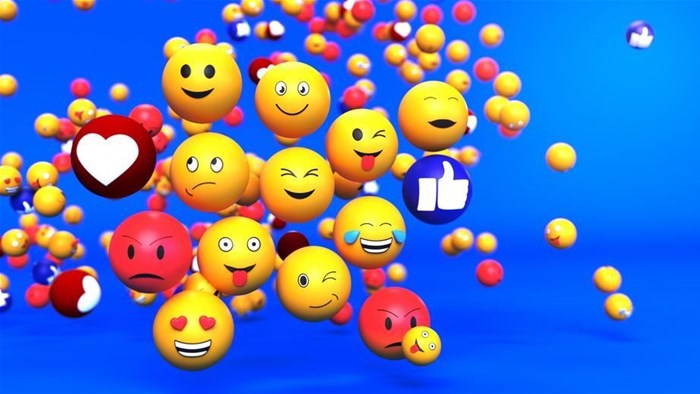
On a high level, a contract is typically established when there is an offer and acceptance, the meeting of the minds, capacity (ability to contract), the possibility of performance of what was agreed, lawfulness and compliance with the prescribed formalities.
A contract must demonstrate the parties' intention to create reciprocal obligations to be legally binding. Traditionally, this intent is communicated through written or verbal means. However, as communication habits shift, courts increasingly acknowledge that emojis can also express intent, and that is where the concept of emojis being a contract finds its roots.
To illustrate, if a party sends an emoji in response to an offer and the context suggests that the emoji was intended to signify acceptance, it may be considered valid. Similarly, an emoji can express a request, such as using a money bag emoji to indicate a proposed sale price.
A fundamental principle of contract formation is the "meeting of the minds", which refers to both parties' mutual understanding and agreement on the terms of the contract. As emojis can sometimes clarify the emotional tone behind a message, they can contribute to ensuring that both parties have a shared understanding of the terms.
In a recent Canadian legal case, South West Terminal Ltd v Achter Land, emojis as electronic signatures took centre stage, presenting a unique and intriguing aspect of contract formation. South West Terminal Ltd (SWT), a Canadian grain and crop inputs company, has a longstanding history of purchasing grain from Achter Land & Cattle Ltd (Achter), a farming corporation owned by Chris Achter.
During March 2021, a SWT representative texted several producers an offering at specific prices for delivery in October, November, or December. After receiving the text, Achter drafted a contract for the sale to SWT, which was confirmed through a "thumbs-up" emoji response from Achter. However, Achter failed to deliver the agreed-upon product by November 2021, leading to a court battle where the "thumbs-up" emoji's legal significance as an electronic signature was deliberated.
Ultimately, the court ruled in favour of SWT, accepting the "thumbs-up" emoji as Achter's acceptance of the contract, making it a valid electronic signature under Canadian law, and awarding SWT the requested damages.
In the past, the conventional method to signify consent and commitment to an agreement or document was through a wet ink or manuscript signature, representing the signatory's mark of endorsement or understanding of a contract or contents of an agreement. However, since the introduction of the Electronic Communications and Transactions Act 25 of 2002 (ECTA), the definition of a signature in South African law has widened.
In the case of Spring Forest Trading 599 CC v Wilberry (Pty) Ltd t/a Ecowash [2015] (SCA), the court addressed a situation where the parties had imposed formalities of writing and signature for a subsequent agreement cancelling the original contract. The court held that the parties' names typed at the bottom of their emails met the requirements for an electronic signature under Section 13(3) of the ECTA.
If the Canadian case were to apply in South Africa, the court would likely analyse the use of the "thumbs-up" emoji in the context of Section 13(3) of the ECTA. If the "thumbs-up" emoji can be construed as an electronic signature intended to identify the sender and indicate approval of the contract, and if it is considered sufficiently reliable under the circumstances, the court may conclude that the self-imposed formalities of writing and signature have been met.
Until we have a decisive precedent in SA, it remains to be seen, as with any form of communication, emojis can be subject to interpretation, leading to potential disputes. The use of certain emojis, such as a wink or a thumbs-up, might be perceived differently depending on the context and the relationship between the parties. Courts would need to carefully analyse the context and the parties' intentions to determine the true meaning of an emoji in a contract.
While emojis can enhance communication, using them as a form of contract still poses challenges. Proving that an emoji represents a legally binding agreement can be complex, and the burden of evidence falls on the party asserting its validity. Moreover, certain emojis may be ambiguous and open to different interpretations, potentially leading to disputes.
In conclusion, the Canadian case involving emojis as electronic signatures highlights the evolving nature of communication and its intersection with the legal realm. Emojis have undoubtedly become a ubiquitous form of expression, transcending language barriers and bringing a new dimension of meaning to digital interactions. While the case demonstrates the court's acceptance of the "thumbs-up" emoji as a valid electronic signature, the situation in South Africa would likely be subject to scrutiny under the Electronic Communications and Transactions Act (ECTA).
South African courts would analyse the intent and context behind the emoji's use, considering whether it meets the requirements for an advanced electronic signature under statutory formalities or an electronic signature under self-imposed formalities. Ultimately, the outcome would depend on the facts and circumstances surrounding using the emoji and its adherence to the ECTA's criteria for electronic signatures. As technology continues to shape communication and transactions, the legal system must adapt to address these novel challenges and ensure the effectiveness and validity of electronic signatures in a digital world.
As our world becomes increasingly digital, emojis as a form of communication will likely persist and evolve. Thus, it is essential to be cautious in using emojis to express contractual agreements and, where necessary, seek professional legal advice to ensure clarity and enforceability.